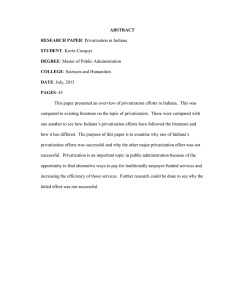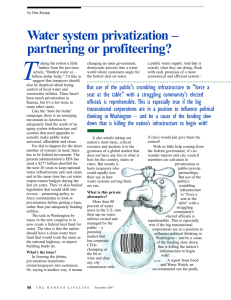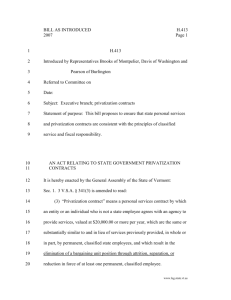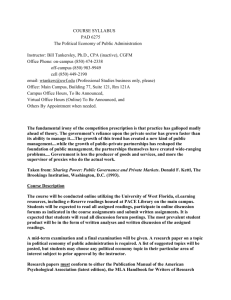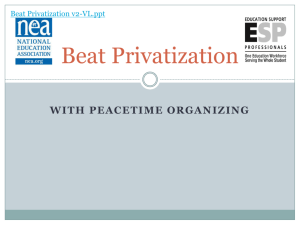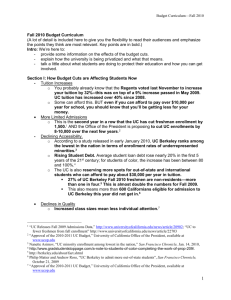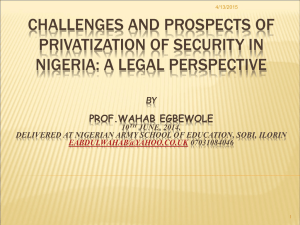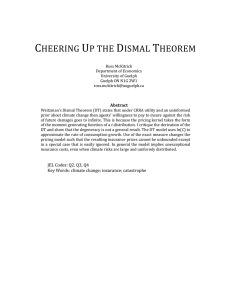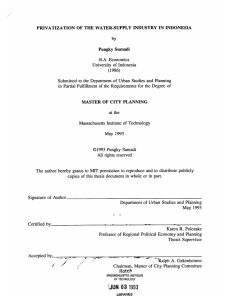Open Access vs Exclusive Access With Two Variable Factors ∗ Ronan Congar
advertisement
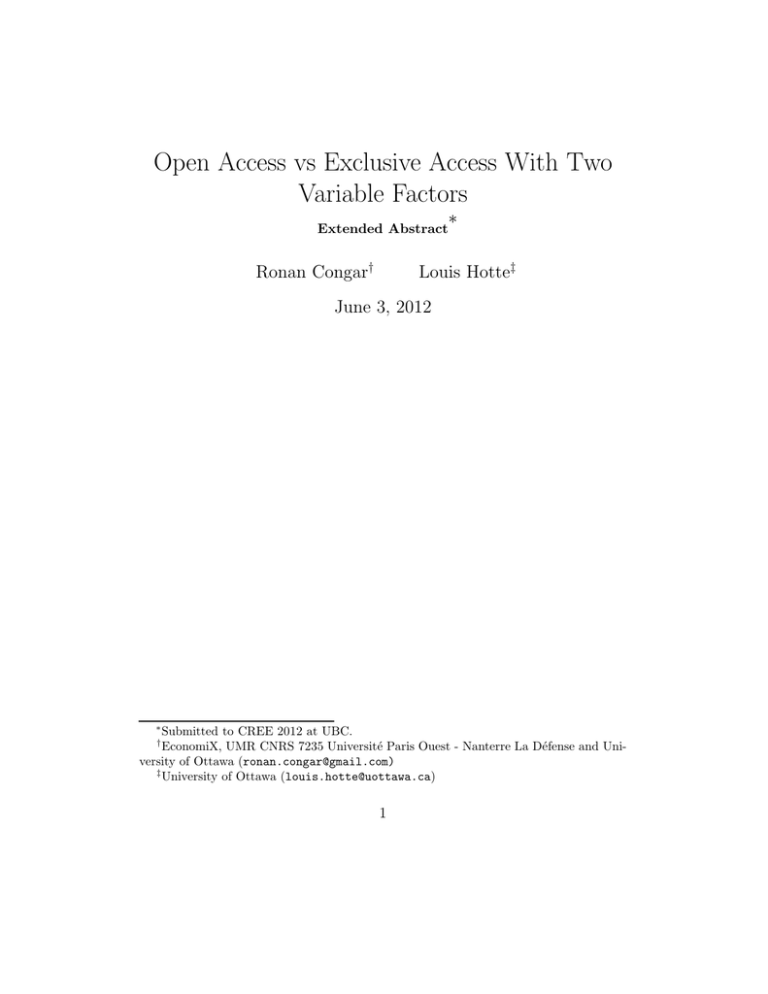
Open Access vs Exclusive Access With Two Variable Factors Extended Abstract Ronan Congar† ∗ Louis Hotte‡ June 3, 2012 ∗ Submitted to CREE 2012 at UBC. EconomiX, UMR CNRS 7235 Université Paris Ouest - Nanterre La Défense and University of Ottawa (ronan.congar@gmail.com) ‡ University of Ottawa (louis.hotte@uottawa.ca) † 1 1 Keywords: Property Rights; Open Access; Natural Resources; Mobile Capital; Factor Payments; Income Distribution Weitzman (1974) and Samuelson (1974) have shown that the creation of property rights in the use of a fixed factor will make the variable factor worse off as compared to a situation of free access and this, despite the fact that it raises overall efficiency. In this paper, we show that this result is not robust to the addition of a second variable factor and provide necessary and sufficient conditions. While the institution of exclusive access in the resource sector may drive out labor, it may also drive out capital. As both factors move into the manufacturing sector in unequal proportions, factor intensities will be affected and consequently, factor returns will change. We provide necessary and sufficient conditions under which the returns to labor increases following a change of property regime from open to exclusive access, while that of capital decreases. We further discuss the role played by production technologies in terms of output elasticities with respect to inputs. The Weitzman-Samuelson proposition sparked a literature in which authors proposed to modify the initial model in ways that could reverse the results. Anderson and Hill (1983) argue that privatization may not be more efficient if it leads to competing claims to ownership that uses up real resources. Brooks, Michael A. and Heijdra, Ben J. (1990) show that labor wages may increase following privatization if extra labor is required to establish private property. Brito, Intriligator and Sheshinski (1997) consider a heterogeneous labor force and also show that the wage could increase following privatization. Baland and Francois (2005) argue that common property may act as an insurance mechanism and thus be ex-ante Pareto superior to private ownership. Ambec and Hotte (2006) show that when workers have heterogeneous productivities, private property may benefit the less produc- 2 tive workers when enforcement is imperfect. Although all of those papers provide interesting qualifications to the Weitzman-Samuelson proposition, all assume labor to be the only mobile factor in the economy. To our knowledge, de Meza an Gould (1987) is the only paper that mentions the potentially important role of a second variable factor. Their analytical framework, however, does not include a full-fledged general-equilibrium model which keeps track of all factor movements and price variations. Broadly speaking, our model takes the insight offered by de Meza an Gould (1987) and introduces it into the framework developed by Weitzman (1974). This allows us to uncover the precise mechanisms at work as well as to provide the necessary and sufficient conditions under which wages could increase following privatization. This paper was also inspired by Karp (2005), who argues that when considering the interactions between trade openness, property regimes, and natural resource use, one should treat both labor and capital as mobile factors between the resource and manufacturing sectors. This was in response to previous analysis that ignored the role of capital, such as Chichilnisky (1994), Brander and Taylor (1997) and Hotte, Long and Tian (2000). While Karp’s analysis concentrates on the issue of excludability of capital use, our analysis assumes perfectly excludable capital throughout.


